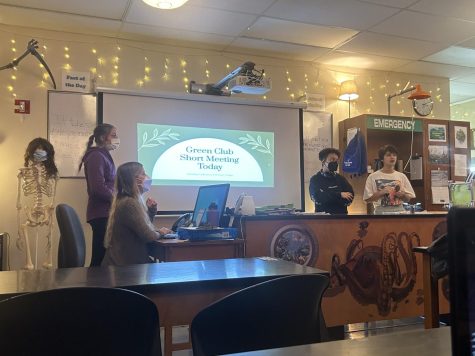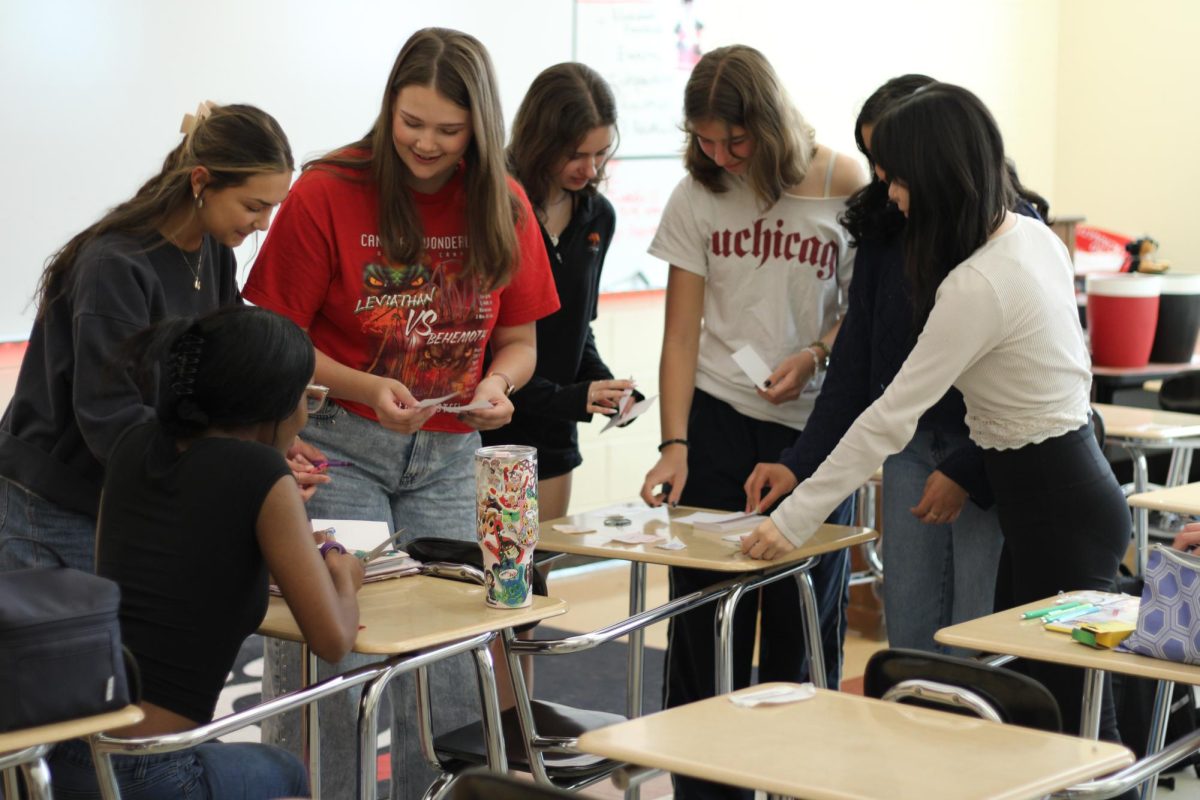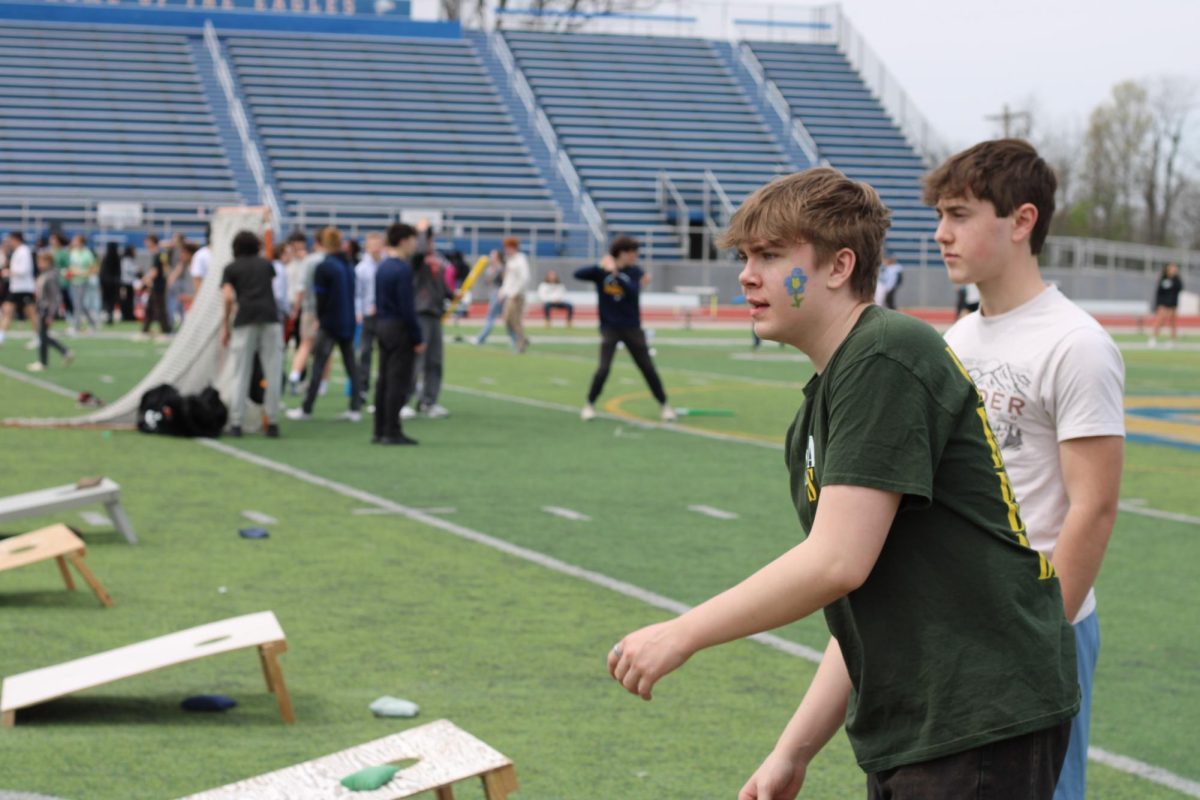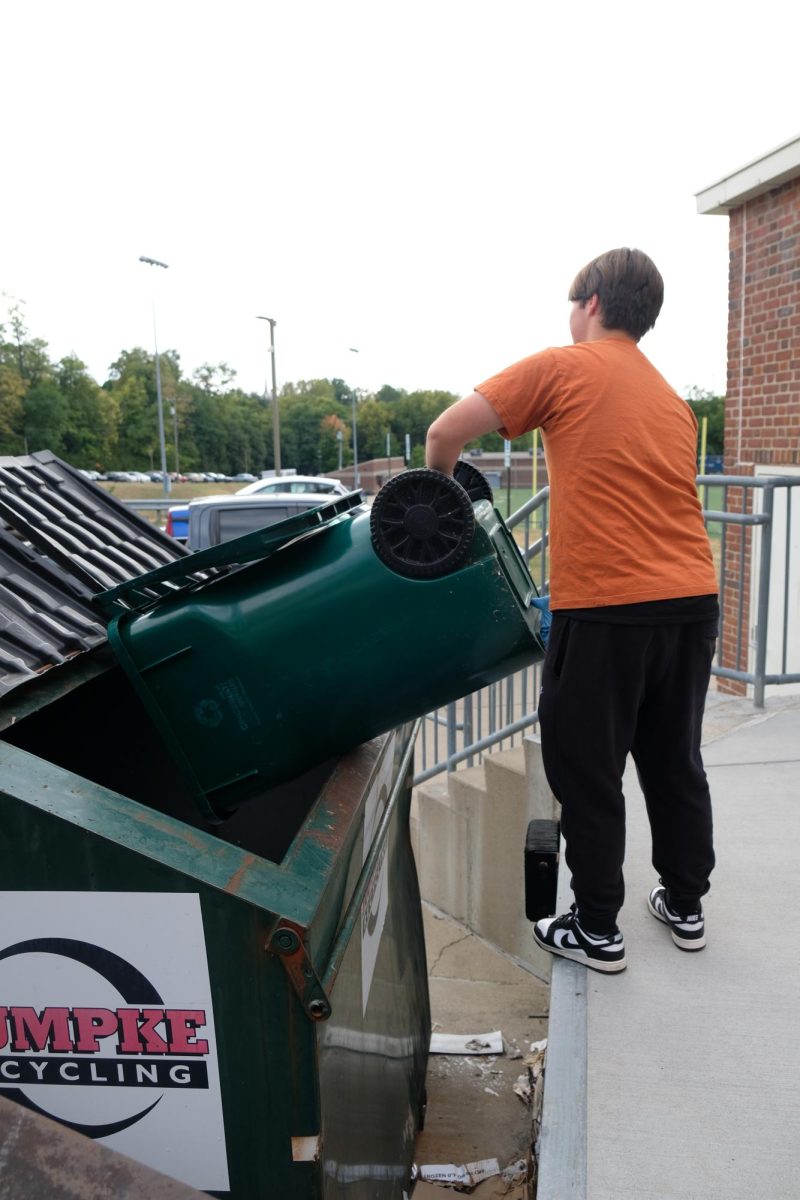Working towards zero-waste
Sustainability Club, Green Club introduce composting program
The WHHS Alumni Foundation bought a composting tumbler for the courtyard back when it was built, and Green Club was founded to maintain it. “I wanted to start composting, but [the tumbler] hadn’t been used in years, so I found the part that was needed to fix it [and] fixed it,” Angelina DiPaola, ‘24, said.
February 9, 2023
As 2022 came to an end, the Sustainability Club and Green Club collaborated to improve WHHS environmentally through composting. The Sustainability Club felt that it was important to give students the opportunity to compost.
“I knew that Green Club has a big tumbler of compost that they’ve been collecting from the teacher workrooms, [so] I wanted to make sure that we were able to extend this opportunity to junior high and high school students,” Logan Symson, ‘24, vice president of the Sustainability Club, said.
When the courtyard in the science building was built, the alumni donated a compost tumbler which has become the necessary tool for creating compost.
“For composting to work correctly, it needs to be aerated,” Angelina DiPaola, ‘24, a Green Club member and the director of the compost initiative, said. “That means there needs to be oxygen and a tumbler is a really good method to do that.”
The Sustainability Club educates students about composting, due to the club having more members and a greater ability to reach students through social media. Then, Green Club works behind the scenes, collecting the food scraps and turning them into usable compost.
“I started composting with the teachers by myself. It was really my idea to start small, [to] see if it even works here,” DiPaola said. “[Then] the sustainability club came to me and were like, we want to do composting school-wide, and I was like, that’s exactly what I’ve been wanting to do.”
First, they contacted administration to get approval to set up the compost bins.
“We sent them a document that had what we wanted to do with the composting program, our mission statement, as well as specifics that we wanted to achieve, and they were kind of like ‘Good, maybe that could work,’ so we thought, ‘Okay, let’s put this plan to action,’” DiPaola said.

The Sustainability Club started setting up the materials needed to make this composting movement successful. There wasn’t any funding needed for the composting program because Green Club already had the bins from experimenting with composting in teacher workrooms.
“We have big posters up that are education posters in the cafeteria in front of the bin saying what should go in there and what shouldn’t,” Symson said.
Both of the clubs believe that it is very important to participate in the compost pile. When done correctly, composting can help the environment in many ways.
“By choosing to take a minute out of your day to go to the yellow compost bin and putting your apple core in, that adds up to more methane emission being reduced from a landfill,” DiPaola said.
The compost also helps Green Club maintain the gardens in the courtyard every year.
“We have concrete beds here and the soil goes away each year from plants and from [being] blown away, so we need more soil to refurbish our bed. Composting is one way that we can do that,” DiPaola said.
Composting doesn’t just help the environment, but can also improve the school.
“[Students are] helping to reduce waste and with little by little steps, they are helping towards a big goal of [the school] being a non-waste facility, which is pretty cool for a public school to have,” Symson said.
Students can also continue reducing food waste outside of school.
“It’s really easy to do composting at home, you just need a little bin and then a bin in the backyard,” Symson said.
The Sustainability Club hopes that information about composting continues to spread.
“[Compost bins are] pretty small and they’re yellow,” Symson said. “I think definitely telling your friends that there are compost bins available is a great way to spread the word that they’re there.”
Both Green Club and the Sustainability Club are excited about this new addition that is making the school a better environment for its students.
“Now we just brought [composting] to the students and it’s definitely a dream fulfilled,” DiPaola said. “I hope that it continues on to become a really good thing for the school.”



![The WHHS Alumni Foundation bought a composting tumbler for the courtyard back when it was built, and Green Club was founded to maintain it. “I wanted to start composting, but [the tumbler] hadn't been used in years, so I found the part that was needed to fix it [and] fixed it,” Angelina DiPaola, ‘24, said.](https://whhscbox.com/wp-content/uploads/2023/02/IMG_6167-1-675x900.jpg)



